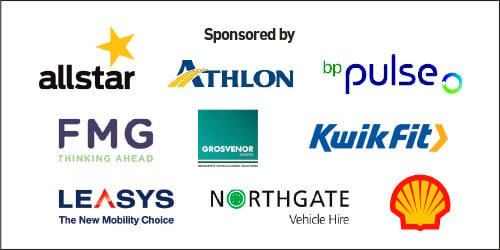This feature was taken from our special Leadership in fleet report. Click here to read it.

In recent years the transport and mobility industry has gone through a ‘blink and you’ll almost miss it’ phase, where new technologies are announced in a blaze of publicity, only for some to disappear quickly without a trace.
Many, of course, will have a long-lasting impact and improve how people move around, but may take several years to enter the mainstream.
Identifying which technologies will make the breakthrough and which will fall by the wayside is the purpose of the annual Hype Cycle for Transportation and Smart Mobility report, produced by global technology consultancy Gartner.
In its recently released 2023 report, new entries this year include commercial space travel, electric ships and aircraft and ion-propelled unmanned aerial vehicles (UAVs).
Gartner estimates all of these are more than 10 years from entering the mainstream, which is the same timescale it offers for hypersonic aircraft and Hyperloop.
But many technologies – are likely to be of more relevance to fleet decision-makers and include hydrogen transportation, Mobility-as-a-Service (MaaS), micromobility and autonomous vehicles.
In this feature we look at how Gartner assesses the development of relevant mobility technologies, and when it thinks they may enter the mainstream.
To go straight to the relevant section, click on the section title here:
Autonomous vehicles
Autonomous vehicle technology is between five and 10 years away from entering the mainstream, says Gartner.
It has the potential to bring many benefits, including cutting operational costs, increasing vehicle utilisation and improving road safety.
“Self-driving technology will continue to advance, leading to increased adoption across various areas, including ride-hailing and micromobility,” says Gartner senior director, analyst, Jonathan Davenport.
“The trend is motivated by the difficulty in hiring and retaining drivers, as well as the need to reduce cost and improve safety; their artificial intelligence (AI) systems will never be distracted, drive drunk or speed.
“In urban areas, inexpensive fares and high-quality service may reduce the need for private car ownership, while autonomous features on privately-owned cars will enable productivity and recreational activities to be undertaken while the vehicle handles the driving operations.”
However, he believes the autonomous vehicle market is most likely to evolve gradually from ADAS (advanced driver-assistance systems) to higher levels of autonomy on passenger vehicles, rather than seeing a robotaxi-based revolution.
The first regulatory steps to make autonomous technology a reality on public roads outside of trials have already been taken.
Under the widely-adopted categorisation scheme by the Society of Automotive Engineers (SAE), there are six autonomous driving levels, graded 0 to 5.
Level 0 involves no automation, while Level 5 is fully autonomous, where the vehicle occupant is not involved in the driving at all.
Level 1 and 2 technologies are already common on new cars and include features such as adaptive cruise control.
Level 3 autonomy is a significant technological leap above Level 2 as those vehicles run mainly on their own and require human intervention only in cases of extreme environments and failures.
The first binding international regulation for SAE Level 3 vehicle automation was approved by the United Nations Economic Commission for Europe (UNECE) earlier this year which allows automated lane-keeping systems (ALKS).
To take advantage of the new regulatory landscape, vehicle manufacturers are beginning to announce Level 3 solutions.
Mercedes-Benz is the first manufacturer worldwide to secure internationally valid system approval, and has made an application to enable cars to drive autonomously in California.
In China, Changan, Great Wall Motor and Xpeng have announced Level 3 systems, while the new Genesis G90 and Kia EV9 will come equipped with a Level 3 highway driving pilot function.
Volvo’s EX90 vehicles will be hardware-ready for unsupervised autonomous driving, including a lidar sensor, despite the self-driving software not being ready for deployment.
The manufacturer plans to deploy an over-the-air software update to move capability from Level 2 ADAS to Level 3 in the future.
Davenport says to further enable and accelerate its uptake, governments need to craft legislation to ensure autonomous vehicles can safely co-exist with a traditional vehicle fleet, as well as a framework for their approval and registration.
Mobility-as-a-service
MaaS may not yet have had the transformational effect as was predicted by many industry figures a relatively short while ago, but it is just two-to-five years away from becoming mainstream, according to Gartner.
The technology, which provides users with access to multiple modes of transportation through a single interface, allowing them to plan, book and pay for their entire journey, aims to provide users with a convenient, door-to-door, cost-effective and sustainable alternative to private vehicles.
It has the potential to reduce congestion and emissions as it promotes the use of shared mobility, such as e-scooters and ride-hailing.
In the fleet sector, it was felt MaaS could replace company cars in some circumstances.
However, while it uses proven technology and the number of vendors offering MaaS is evolving, it still has several obstacles to overcome, says Pedro Pacheco, vice-president research at Gartner.
Transit authorities have been sluggish in defining rules and governance for MaaS, he adds.
“Some mass transit players have an old integration infrastructure, which makes it hard for MaaS to operate due to limitations in data collection and exchange.
“Some shared mobility providers are not embracing a spirit of cooperation, trying to protect their ‘territory’ and not sharing any data with other transportation players in the ecosystem.”
In the UK, a number of trials are currently taking place, such as the Go-Hi MaaS Project in the Highlands and Islands of Scotland.
This is the largest MaaS deployment to date in the UK, offering access to buses, trains, ferries, e-bikes, taxis, car clubs, car rental, folding bikes, flights and hotels.
Project partners include Enterprise Car Club and Car Hire, Brompton Bike Hire, Stagecoach Bus, ScotRail, Loganair, Northlink Ferries, Liftango Move Flexi, Inverness Taxis, Leeds University, Arcadis and Skedgo.
So far, there have been more than 3,000 unique downloads and registrations of the app, with plans to launch a mobility credits scheme in conjunction with mobility charity Motability.
The Go-Hi platform is also to be used by The Highland Council to offer alternative mobility options to their employees for commuting and business-related travel.
Elsewhere in the UK, Nottingham City Council has this summer been recruiting for someone to lead on its MaaS app.
This will provide a single platform for booking transport in Nottingham and Derby, covering scooters, bikes, taxis, car parking, car club, buses, trams and trains.
However, there is a potential downside to a high uptake of MaaS, warns Pacheco.
It can also trigger a move of users from mass transit to personal shared mobility or ride-hailing,” he says.
“If the move reaches a certain proportion, this could generate higher emissions and more congestion.”
Shared mobility
Shared mobility refers to a transportation service or on-demand transit that are shared among users, either simultaneously, as a group or over time as a personal rental.
It includes the use of car-sharing, ride-hailing and bike-sharing and aims to reduce the dependency on private vehicles; it has fuelled the development of MaaS, which offers a common platform of booking, routing and payment for low-cost alternatives.
“Shared mobility allows for a more sustainable and accessible way to move around and addresses the challenge of first- and last-mile mobility, which is a major bottleneck for transportation agencies,” says Mike Ramsey, vice-president, analyst, at Gartner.
The return of workers to offices and urban areas post-pandemic and increased social travel have had a positive impact on the use of shared mobility.
However, its economics have always presented a problem.
“Many shared mobility platforms have been unprofitable, although they are inching towards better results,” says Ramsey.
He warns another potential issue is user behaviour and safety. Addressing issues like wearing helmets, theft, vandalism or misuse of vehicles all post a major challenge to operators.
Gartner considers shared mobility to be early mainstream as focused experimentation and involvement of a diverse range of organisations have led to an understanding of the technology’s applicability, risks and benefits.
Ramsey expects shared mobility to become fully mainstream in less than two years.
Hydrogen transportation
Few issues are as divisive in the zero-emission transport sector as battery electric versus hydrogen vehicles.
Battery electric vehicles (BEVs) are currently the overwhelmingly dominant technology, with advocates arguing that as it is already so far ahead with charging infrastructure and uptake, that hydrogen transportation is already dead in the water before it has started.
But refuelling a hydrogen vehicle is considerably faster than charging a BEV, especially when it comes to large vehicles, and this factor has helped persuade some companies to see hydrogen as a serious alternative to BEV technology.
Some, like Toyota, are spending millions to commercialise fuel cell technology for a broad range of transportation solutions.
“Despite heavy investment in BEVs, battery propulsion is not expected to cover all transportation needs, at least in this decade, due to limitations in energy density, time to recharge and weight,” says Pacheco.
This means that, despite hydrogen not yet being fully viable due mainly to a lack of refuelling infrastructure and cost-competitive production of the gas – “infrastructure is a key bottleneck to the adoption of hydrogen-powered vehicles,” says Pacheco – there is still an opportunity for the technology to gain a foothold.
“Hydrogen still has a chance to develop quickly if incentives can enable a price-competitive green hydrogen distribution network before BEV technology can fulfil use cases for long-distance travel on land and sea,” he adds.
“Batteries’ very low energy-to-weight ratio means hydrogen still stands some chance of becoming the main green solution for aviation within 15 years.”
Hydrogen’s case is helped by both the EU and China putting together regulations and incentives promoting hydrogen vehicles, while the fuel is also considered to have a strong role to play in energy storage and heating.
The EU predicts hydrogen’s part of the energy mix will grow from 2% in 2018 to 13%-to-14% by 2050.
Governments and companies investing in production of hydrogen for these reasons will help lower production costs and, hence, will benefit the transportation sector, says Pacheco.
“Jump-starting the use of hydrogen in transportation and its supply chain is only possible through major incentives and regulation,” he adds.
“Even so, there is the risk of a market collapse after ending those incentives.”
Gartner expects it to be more than 10 years until hydrogen transportation enters the mainstream.
As the role of fleet decision-maker (FDM) grows ever more complex, leadership is becoming a crucial quality.
Today's successful FDMs need to lead their teams, their drivers and their key stakeholders through a multifarious range of topics, from energy management to electric vehicles (EVs), and supply chain management to automated technology.
They need to be at the forefront of industry developments to guide their company and ensure the fleet meets the business needs in the most efficient and effective way.
Professional fleet leaders have the ability to implement policies successfully, adapting to an ever-changing environment.
They experiment and are first in line to trial new initiatives. They communicate clearly and often with those around them, helping to get buy-in to new ideas.
People leadership has risen up the list of priorities thanks to the greater focus on staff wellbeing, whether that's within fleet teams themselves or among the driving workforce.
The need to transition to EVs has opened the floodgates to a new vocabulary on workplace charging infrastructure (kW, resistors, cabling, capacity overload..), plus the creation of new relationships with the distribution network operators that would have been unheard of just three or four years ago. In each case, leadership is vital.
In this special Leadership in fleet report, we look at some of the areas having the greatest effect on the way fleets operate, offering advice and insight to give FDMs the confidence to make the right decisions and form best strategies.
























Login to comment
Comments
No comments have been made yet.